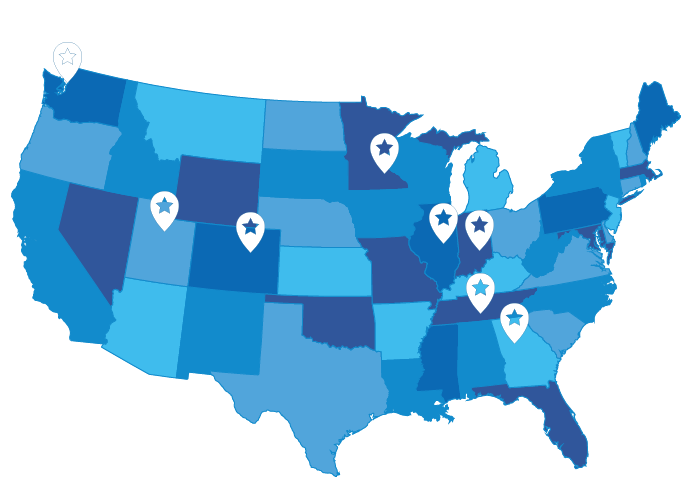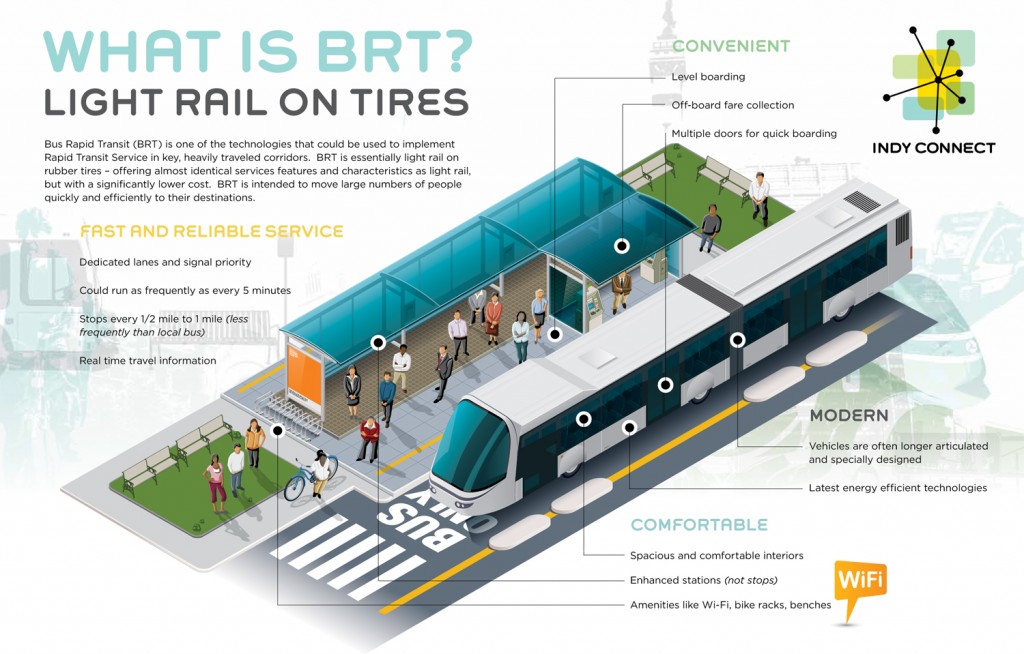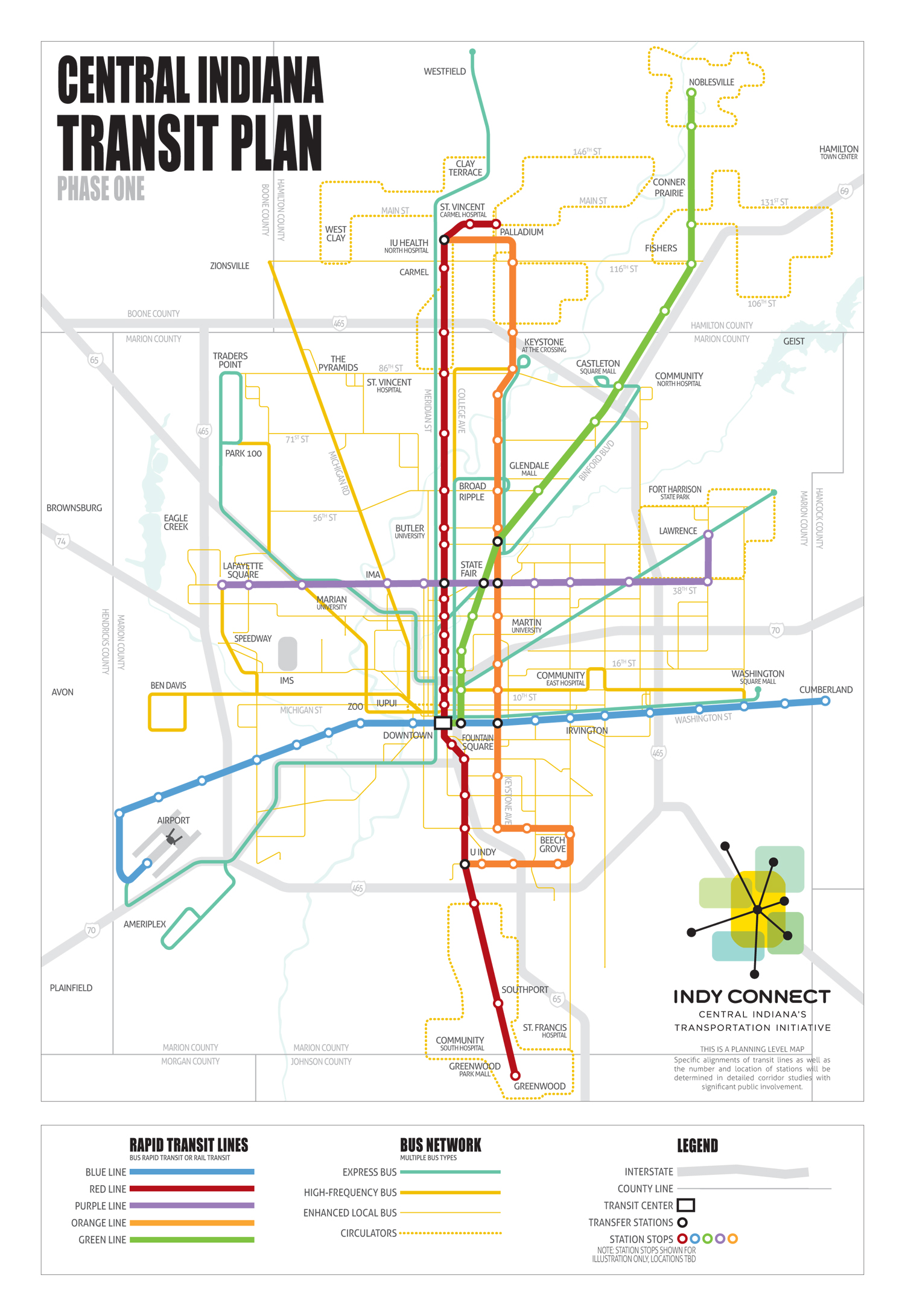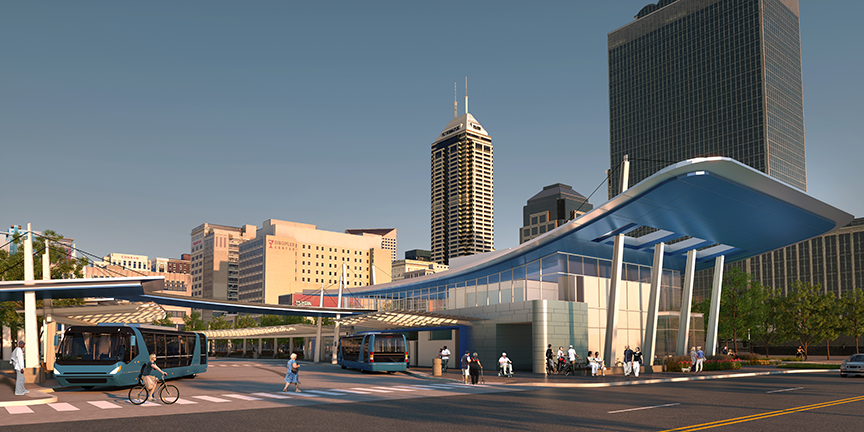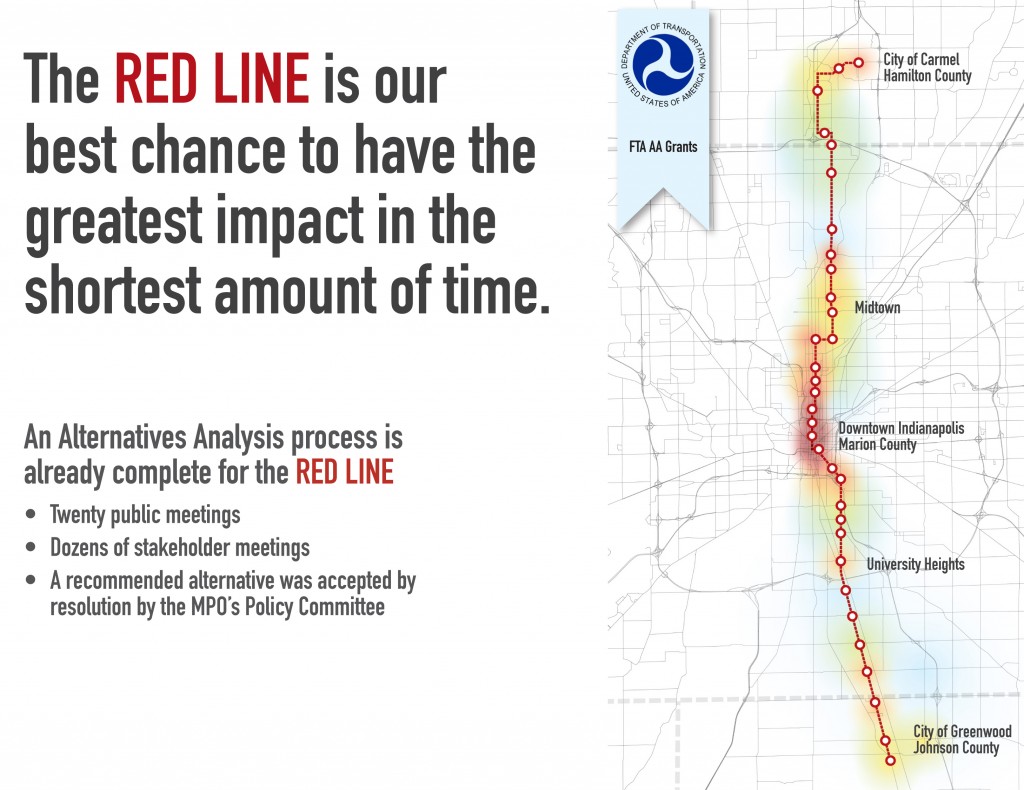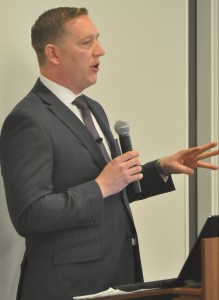Supported by a strong business community, an ambitious heartland city wins the ability to let citizens decide their own transportation future.
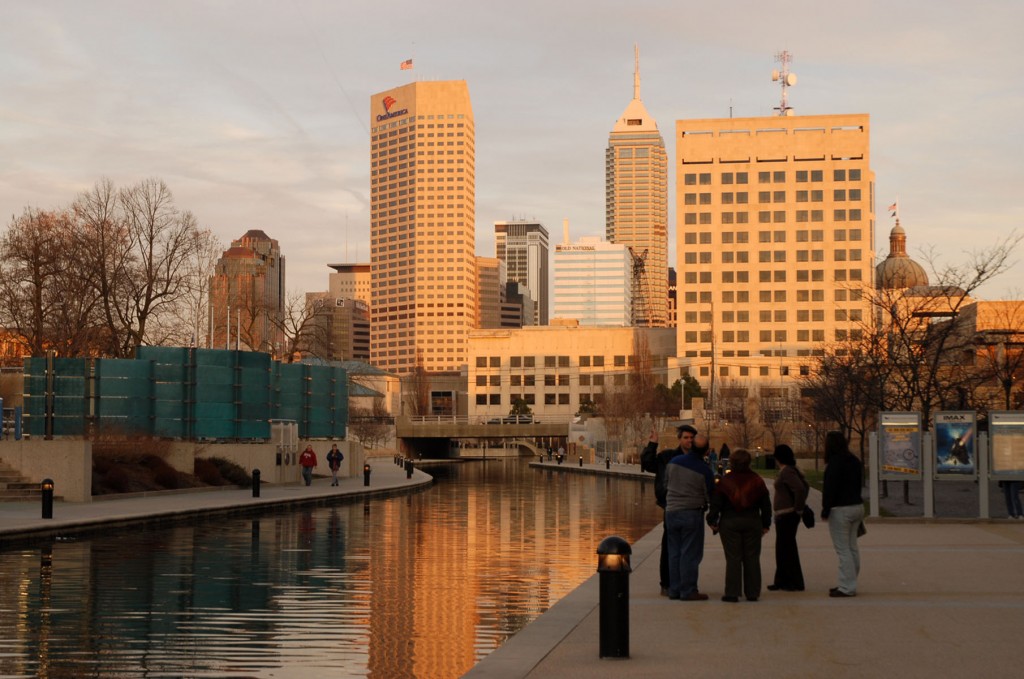
Creative Commons photo by Kim Manley Ort. http://flickr.com/photos/kimmanleyort/341589265/
Creating a world-class public transit network is at the heart of the economic development strategy for the region of nearly 2 million. With the backing of Indianapolis Mayor Greg Ballard, a diverse group of Indy business leaders — including those from higher education, healthcare and IT sectors — are promoting it as a key to luring employers, attracting young families and urban-oriented millennials looking for more affordable alternatives to pricey coastal cities, and drawing Indy-born college grads back home.
Indianapolis leaders say the region needs a transit system to match the city’s aspirations.

Mayor Greg Ballard
“I believe an economically viable and sustainable regional mass transit system is vital to our continued growth as a region,” Mayor Ballard told UrbanIndy. The transit plan for the future, as laid out by the coalition that created the Indy Connect blueprint, will ensure that the city and its surrounding communities continue to provide comprehensive transportation options to serve residents and attract a vibrant workforce.
In late March 2014, action by the Indiana legislature will now allow a ballot measure in six central Indiana counties to let voters decide whether to raise new funds to expand and improve their mass transit systems.
“Our capital city is a world-class destination and needs a world-class transit system,” Gov. Pence said in a statement after signing the bill. The bill clears the way for Marion, Hamilton, Hancock, Johnson, Delaware and Madison counties to vote for local income taxes to pay for expanded transit service. That vote is expected to take place in November 2016.
Though a provision in the bill prohibits the new revenues from going toward light rail, the Indy coalition is hopeful they can come back and change that one day after taking a successful first step. As Mayor Ballard said to the Indy Star before the bill passed, “…We can go forward and show the value of it, and if there is more to be done later on, then we can go back later and do that.”
The decision has been a long time coming, driven for years by the will of thousands of citizens, along with dedicated elected leaders and transit supporters. If the counties choose to support the Indy Connect plan, they will be on their way toward building a comprehensive network of bus routes, rapid transit lines, walking and biking paths, and roads.
Indy Connect
Indy Connect began in 2008 with the Central Indiana Transit Task Force (CITTF) — a group composed of the Indy Chamber, Central Indiana Corporate Partnership, the Central Indiana Community Foundation, the Metropolitan Indianapolis Board of Realtors® — tasked by Indianapolis Mayor Greg Ballard to look at the region’s long-range transportation plan and make recommendations.
Their final recommendations centered on the need to develop a comprehensive multimodal transportation network that included an expansion of local and regional bus service, as well as new tolled express lanes on certain segments of major interstate highways and new passenger rail rail service. While continued expansion of the road network was included, it also found that a major transit investment was the best long-term choice for the highest return-on-investment.
The CITTF also included recommendations for financing and governing the future system, and stated the recommendations should be subjected to intense public scrutiny and changed accordingly.
The Indianapolis Metropolitan Planning Organization, the 10-county Central Indiana Regional Transportation Authority, and IndyGo, the transit operator covering the city of Indianapolis and Marion County, embarked on the largest public outreach campaign in the region’s history to engage the public, with more than 10,000 individuals consulted during three rounds of public meetings.
They took demonstration buses to county fairs, solicited voluminous feedback online, and engaged with the public in numerous meetings on Indy Connect. Mayor Ballard called it “the most comprehensive transportation plan — created with the most public input — our region has ever seen.”
All of that intensive public comment, combined with some strange clauses in the enabling legislation, has had an impact on the Indy Connect plan. Now in its third version, the plan would vastly improve the frequency and service hours of the local bus network, create a new local bus system in the fastest growing suburban county (Hamilton County), add express routes, and add five new bus rapid transit lines.
Local leaders are working to have the proposal’s details worked out by the end of 2015 for the 2016 vote.
Improving service today, with an eye to the future
Though a full build out of the Indy Connect plan would require the additional funding provided by the ballot referendum, Indy leaders aren’t sitting still and waiting for November 2016 to arrive.
Indy is also in the middle of a separate process to completely rethink their local bus service, a process known as IndyGo Forward. The initial feedback is steering them from a coverage model — where routes more or less blanket the area — to a model focused more on ridership — focusing a greater share of the budget and service on the transit lines and corridors that serve the most people. The IndyGo Forward site explains further:
In the spirit of a shift towards ridership and take advantage of the new Downtown Transit Center in 2015, we’ve identified opportunities to make the transit network more useful for spontaneous travel, which means making service more frequent. The proposed 2015 network alters 27 of our 31 routes and consolidates parallel routes onto fewer, main streets and in turn make the wait time between buses shorter for passengers. The trade-off of this is that some passengers may have to walk a few blocks further to reach their route, but once they get their stop, the wait time will be shorter.
Last year, Indy won a TIGER VI grant to start engineering work on the Red Line, a main trunk north-south bus rapid transit line billed as “best chance to have the greatest impact in the shortest amount of time.” They’re moving ahead to apply for federal funding from the Small Starts transit program to get the Red Line up and running as the proof of concept for the rest of the planned system. According to the MPO, 170,000 employees work within walking distance of the Red Line; or one out of every five employees in the region.
In addition to the TIGER VI grant, they’re using available federal money to help plan for the system. The region has also used “alternatives analysis” grants from the Federal Transit Administration, as well as money from the federal Congestion Mitigation and Air Quality program. And they’re prioritizing their Community Development Block Grant funds (from the Department of Housing and Urban Development) into the future transit corridors.
Funding for the full build-out, however, has yet to materialize. With property taxes constitutionally capped and other local taxes wholly committed to debt service on the convention center and sports venues, a proposed bump in income tax at the ballot is the group’s only option.
Economic impacts
The Indianapolis Metropolitan Planning Organization has compiled analyses showing a strong economic benefit from the expanded system within the first 10 years, said Sean Northup, assistant executive director of the MPO. “Our estimates are wildly conservative, and they’re still impressive,” he said.
One economic impact study projects an 11.6 percent return on investment. Another economic research report found that transit will return $3 for every $1 invested. Still another report stated that a $1.3 billion investment would pump out $3 billion in economic impact.
“Those numbers don’t include real estate development or business transactions. We assumed the highest expenses and the lowest revenues. We assumed zero population growth and zero increase in income tax rate,” said Northup.
Indy Connect has garnered tremendous support from the business community, said Mark Fisher, vice president of government relations and policy development for the Indy Chamber.
“As one of our young, millennial champions on this issue noted during testimony before the House Transportation Committee in January 2013, ‘selling a city without transit to millennials is like selling a phone without a camera,’” recalled Fisher.
“We recognized that this was a critical issue and circulated exhaustive petitions to support it — more than 150 entities signed on. Businesses want access to a diverse work force, and they understand that not everyone wants to drive in a single-occupancy vehicle.”
During that same 2013 hearing in the legislature, 43 individuals spoke in favor of Indy Connect, with only two speaking against it. “They had set aside equal time for the ‘against’ testimony, and couldn’t fill the time slots,” said Fisher.
“Indy is the Crossroads of America,” said Fisher. “We have fantastic roadways and highways. We’ve been supportive of efforts to improve our roadways, pumping money into surface transportation. This isn’t just an urban issue. We are growing as a region — a lot of the growth is in the suburban market, but the buses aren’t going to where the jobs are. We hope that by expanding the transit system, we will allow more options for people to get to work.”
The health connection
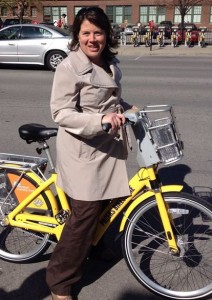
Kim Irwin on the new Pacers Bikeshare system in Indianapolis
Kim Irwin is the director of Health by Design, which convenes the Indiana Citizens’ Alliance for Transit (ICAT). ICAT has been working to improve public transportation and secure more funding for transit in communities throughout Indiana since 2006.
When Indy Connect started as a planning process of the Indy MPO region, Irwin and the ICAT were involved in publicizing and participating in public meetings, and supporting the planning process. ICAT was critical in mobilizing the grassroots to lobby their legislators, turning out citizens to make phone calls and write letters in support of the enabling legislation.
Irwin sees Indy Connect as a critical mechanism for improving the health and quality of life of Indianapolis citizens.
“From our standpoint, transit makes communities healthier because of opportunities for physical activity. People tend to walk more if they use transit. It’s also about overall safety in communities — crashes go down as transit increases. We have air quality issues here, so we need all the help we can get,” to reduce vehicle emissions, she said. “And then there’s access — to jobs, to medical care, to healthful eating, community events — people being able to get where they need to go if they don’t or can’t drive for any reason.”
Removing those pocketbook and health stressors will reduce costs for medical care and transportation, an added benefit on top of the other economic boons from the investment articulated by business and political leaders.
One huge shot in the arm to those efforts to give more people chances to walk or bicycle was the opening of the Indianapolis Cultural Trail in 2014 — a can-do success story if ever there was one.
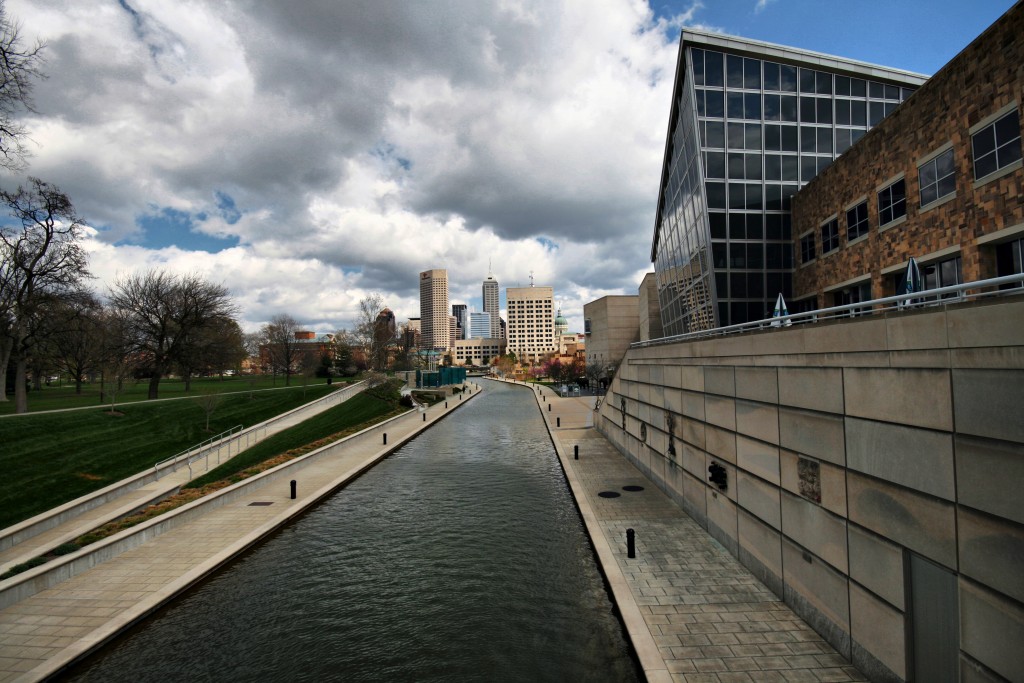
The Cultural Trail runs right along the canal and the Indiana State Museum among other popular destinations on its 8-mile length. Flickr Creative Commons photo by Intiaz Rahim http://flickr.com/photos/chocolatedisco/3645596033/
The $62.5 million investment, funded mostly by private or philanthropic donations that leveraged a federal TIGER grant, is an eight-mile landscaped bike and pedestrian pathway through the heart of the city that is, in the words of the New York Times in 2014, an “accessible urban connective tissue — an amoeba of paths shot through with lush greenery and commissioned works of public art.”
As much as the project was about giving people terrific opportunities to walk or bike through the city, it was an economic boon as well. The Times continued:
The trail has also helped spark a sluggish local economy. Hundreds of millions of dollars in new commercial and residential developments surrounding the pathway have coincided with the trail’s progress, said Brian Payne, president of the Central Indiana Community Foundation, which oversaw its creation…. ‘We have seen no fewer than 25 new businesses open in the last few years, all within a five-block area,’ said Ed Rudisell, owner of three Indianapolis restaurants, including the popular Siam Square in Fountain Square.
Watch the terrific Streetfilms video on the Cultural Trail below
Looking to November 2016
Whether the enviable Cultural Trail, or a robust modern transit system to help attract and retain employees and employers, Indianapolis is making important strides, and Mayor Ballard understands that all of these decisions are an economic imperative.
“Indianapolis is thriving as a magnet for top talent and growing businesses,” Mayor Ballard said, “and strategic investment in a healthy mix of transit options will only strengthen our position as a globally competitive city.”
Share these can-do stories:





